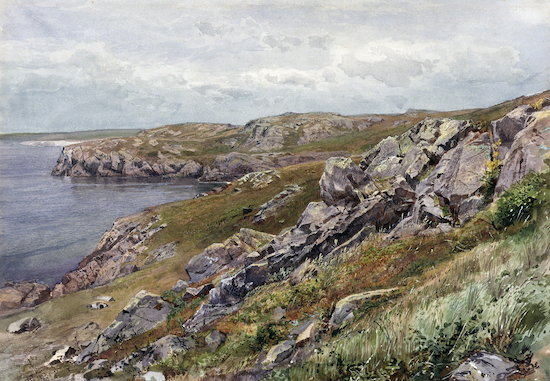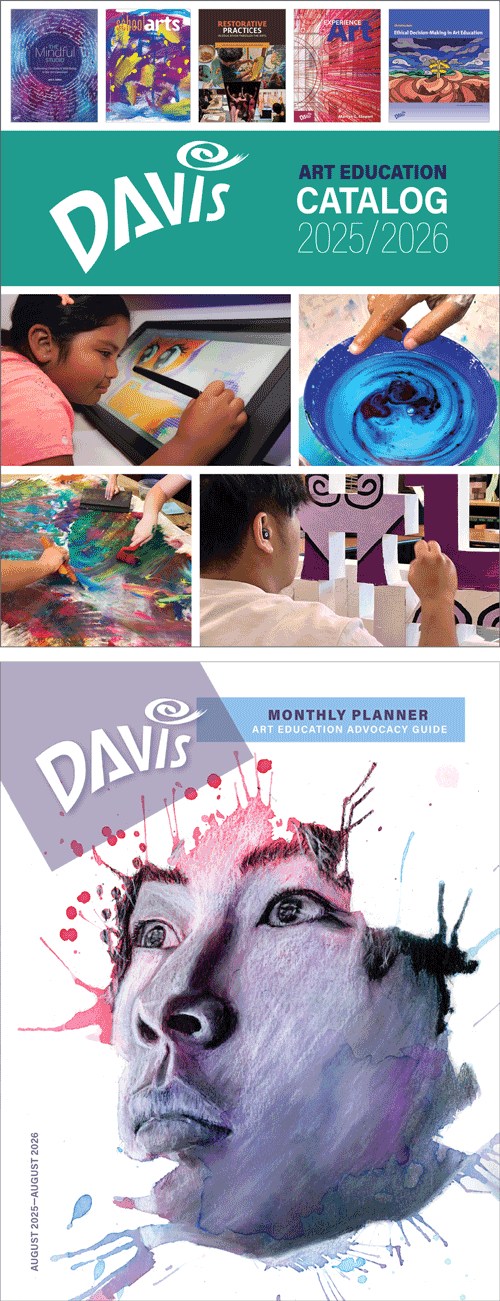Artist Birthday: William Trost Richards
There is nothing more remarkably peace-inducing than a beautiful seascape painting. William Trost Richards was renowned for his beautiful coastal seascapes of the New England coast in all sorts of weather and every time of day.
Artist Birthday for 14 November: William Trost Richards (1833-1905 US)
 |
| William Trost Richards, Conanicut Island, ca. 1875-1882, watercolor on paper, 25.4 x 36.7 cm © 2025 Brooklyn Museum (BMA-1050) |
From the 1870s on, Richards spent summers in Newport, eventually setting up a studio there permanently in 1890. Conanicut Island is in Naragansett Sound off of Newport, Rhode Island. Although Richards initially specialized in woodland scenes, he ultimately became famous for his seascapes, rocky coasts, beaches, and rolling waves. Views of land and water became a standard compositional format for Richards. This view of Conanicut Island combines the romantic grandeur of the Hudson River School, and the meticulous natural detail of the Pre-Raphaelites.
Background
Painting until the 1820s in the United States was dominated by portraiture. Within the forty years following the American Revolution (1775-1783), a native school of American landscape painting -- based primarily on British models -- had blossomed. It was spurred on by Americans' fascination with their new country. As it expanded west art patrons were hungry for views of the "exotic" wilderness.
The interest in landscape was further affected by the American desire to establish its own painting tradition, with subject matter and styles that were uniquely American. The interest in seeing accurately depicted landscapes of newly opened wilderness was one of the reasons realism established such a strong hold over American painting. The artists who painted landscapes in and around the Hudson River Valley -- the so-called "Hudson River School" -- was the first truly American school of painting.
William Trost Richards, born in Philadelphia, grew up admiring the paintings of two prominent Hudson River School artists, Thomas Cole (1801-1848) and Frederic Church (1826-1900). As a teenager he took painting lessons from a local landscape painter Paul Weber (1823-1916), a German emigre who painted scenes of the Catskill Mountains in an academic style. Richards may also have had painting lessons at the Pennsylvania Academy of Fine Arts. In 1856 he traveled in Europe to hone his craft, visiting Paris, Rome and Florence. While in Europe, he met the landscape painter Albert Bierstadt (1830-1902), who helped arrange his first one-person show in Philadelphia when he returned to the US in 1858.
A show of Pre-Raphaelite artists in 1858 cemented Richard's intention to paint landscapes according to the dictates of British philosopher John Ruskin (1819-1900). Ruskin, a mentor and inspiration to the Pre-Raphaelites in Britain, advocated that artists should always paint with absolute fidelity to nature.Between then and the end of the Civil War (1860-1865), he painted views of the White Mountains, Hudson River Valley, the Catskills, and New England seacoast in an almost photographic realism, sometimes mixed with literary themes. From 1866 to 1867 he again traveled in Europe, visiting Britain, France and Italy. On this trip he became fascinated with adding the element of the seacoast to his landscape repertoire.

Comments